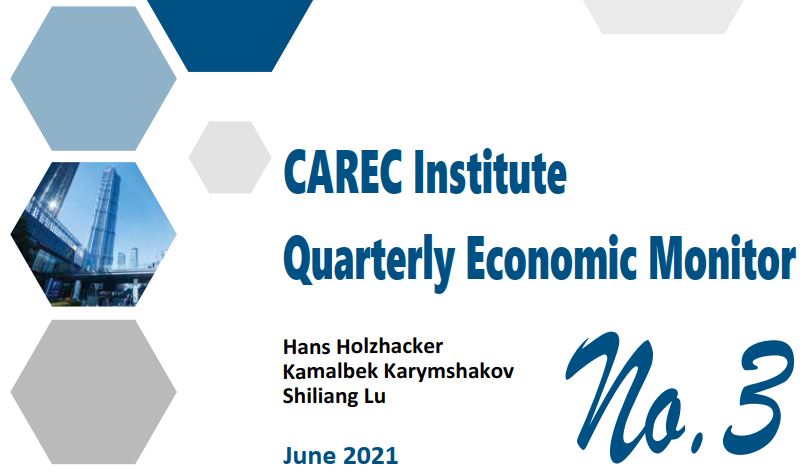CAREC Quarterly Economic Monitor No.3
Our third CAREC Quarterly Economic Monitor shows that an average CAREC region real GDP growth finally turned positive in the first quarter of 2021, after negative growth rates throughout 2020. The recovery was especially strong in the People’s Republic of China (PRC). Countries with a high share of exports going to the PRC, such as Mongolia and Turkmenistan, also profited from this. Higher fuel and metal prices benefitted the CAREC net exporters of mineral fuels and metals.
Goods exports and manufacturing rose substantially, but service recovery and household consumption was less impressive. The negative social impact of the pandemic is still severe. In sectors such as accommodation and restaurants employment took a drastic hit. Real wage growth has been subdued in early 2021.
The correlation between high-frequency output and demand indicators and mobility indicators reflecting containment measures has weakened in 2021, but a severe resurgence of the pandemic and resulting renewed quarantine requirements would certainly derail the nascent recovery.
Investment still needs to recover; growth rates were still negative in several CAREC economies in early 2021. Governments would need to encourage investment especially now by further improving the business climate and easing doing business by advancing e-government and simplifying regulations.
Given that loan growth is rather weak, exchange rates are reasonably stable, and inflation has accelerated only moderately in most of CAREC, monetary policy could remain supportive for some time where needed. Economic policies must be calibrated carefully to support the upswing while not jeopardizing future fiscal and monetary sustainability. At the same time, plans must be concretized how to build forward better, especially how to accelerate the green and digital transitions. To avoid that the recovery is highly uneven for different sectors of the economy and for different parts of the population, policy measures in support of the economy and households must be reduced carefully and selectively.
